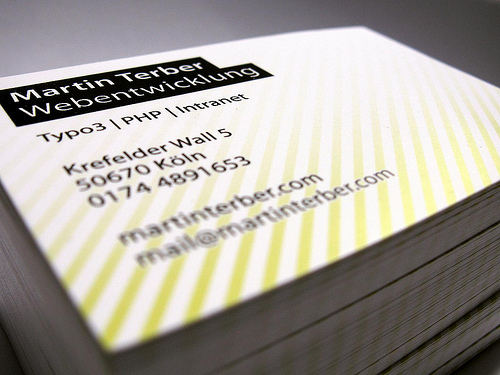Sometimes simply scheduling the meeting can be the hardest part.
- You were at an event last night and met Brett. He had some awesome ideas to help your startup so you got his card and he suggested you get together soon.
- The next day you email him to schedule a meeting but you never hear from Brett again.
You know you need to follow up with Brett but don’t want to annoy him in the process, which may stop him from helping you at all.
 |
| photo credit (creative commons) |
How Do I Follow Up With Brett?
What people don’t realize is why the other person – Brett in this example – didn’t respond to the initial email.
Perhaps he never intended to help me out, but that’s simply unlikely. And even if that’s the case, an extra follow-up can’t make it any less likely that he’ll respond.
Here’s what’s more likely:
- He never saw my email among the hundreds in his Inbox,
- He started to respond but got sidetracked and then forgot altogether, or
- He has a laundry list of stuff to do, and meeting with me just isn’t a high priority
So it’s ok to send follow-ups…it’s even necessary.
The obvious next question is, What do I say to Brett?
1. Keep it Short
Don’t overwhelm Brett. People read shorter emails more often. Wouldn’t you?
How: Keep it to 3-5 sentences max.
2. Make it Actionable
You break down your own tasks into small, manageable pieces, right? (Or should be according to GTD.) Do the same for Brett. Be direct and make it easy for him to help you.
How: Ask a specific YES / NO question. “Can we have a quick call on Tuesday? I’m free from 9-12.”
3. Make Them Want to Help You
Remember, you’re asking for the favor. Remind them of the benefit to them, or add in some humor. Put a smile on their face and your chances have just shot up.
How: “As a thank you: I’d love to give you some eBooks that you can give away to your own customers.”
4. Wait a Few Days
Like the character in a movie who gets the girl’s number (and doesn’t want to seem desperate), be patient.
How: While it always depends, I try to wait a week before sending a follow-up.
Putting that together, here’s what your follow-up might look like:
Hi Brett,
Looking at my calendar I’m open for lunch this Thursday and Friday. Can you get together either of those days around noon?
I’m looking forward to hearing more of the ideas you had at [NETWORKING EVENT], or even just an excuse to get out of the office and treat ourselves to a free lunch on my company.
Thanks!
It’s short, up front and asks a simple yes/no question.
Most importantly, if Brett is someone I don’t know well this follow-up shows him I’m serious. That, in turn, makes him more willing to invest his time in someone he doesn’t know.
A Couple Tools to Make Follow-Ups Easier
And if you have a hard time remembering to follow up in the first place?
Fortunately, there are some great tools that make this part easy and automatic.
Boomerang
Boomerang is an awesome app that lets you set automatic email reminders. Send emails later, Hide messages from your inbox until you need them, OR, Remind yourself if you don’t get a reply to an email you sent.
FollowUpThen
FollowUpThen works a lot like Boomerang but doesn’t require any installs. All you have to do is add a formatted “@followupthen” email address to your email.
Calendly
Calendly helps people pick a time slot on their calendar to meet. This is especially helpful when you can’t see the other person’s availability.
Sometimes people really are too busy and you’re never going to get the response you need. But for all those other times remember that a quick follow-up is easier than you think and makes a huge difference.
PS – While writing this post I found a great post that makes it easy to know when to hyphenate “follow up”: if it’s a verb, leave a space; if it’s a noun or can be preceded by “the”, add a hyphen. My trick is: Noun = No space.





